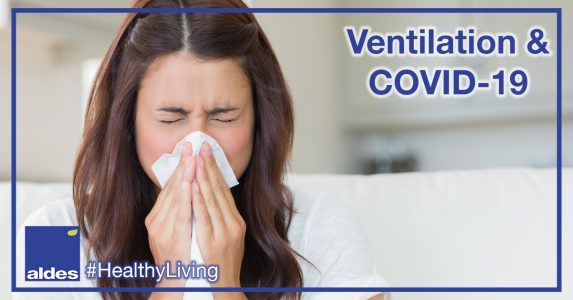 At Aldes, healthy indoor air is not just what inspires us, it is what we deliver. During these past few months of the COVID-19 crisis, we have all listened as infectious disease experts have attempted to provide answers to innumerable questions surrounding the transmission of the virus.
At Aldes, healthy indoor air is not just what inspires us, it is what we deliver. During these past few months of the COVID-19 crisis, we have all listened as infectious disease experts have attempted to provide answers to innumerable questions surrounding the transmission of the virus.
Many of those questions are from homeowners and building maintenance managers wondering how to reduce the spread of COVID-19 within a building or home using their HVAC system.
An abstract of a study published recently in the journal of Respiratory Medicine, The Lancet, links mechanical ventilation with a dramatic reduction in the time that droplets containing COVID-19 stay airborne in a room. The more air exchange that an area gets, the less time particles remain in the air at mouth-level where they can be transmitted from person to person. The study shows that in a well-ventilated space, the average time for half of the particles to fall is 30 seconds, whereas in the same space without ventilation, the time is over 5 minutes – that is 10 times longer!
Knowing this, to help keep yourself safe if you are in close proximity to someone who may have COVID-19, it is very important to ensure that your ventilation system is operational and well-maintained.
If you have an HRV or ERV:
- Ensure that the filters are clean.
- Remove any blockages in the intake and exhaust grilles on the outside of the building.
- Set the HRV to air exchange mode. High speed will bring in more outdoor air and move the air faster.
- Do the “tissue test” at the air supply and exhaust grilles to ensure that air is flowing. Take a tissue and hold it up to the grille. It should quickly stick to the exhaust grilles and quickly blow away from air supply grilles. If the tissue test shows no airflow at one or more grilles, contact a ventilation contractor.
- Keep inside doors open at least slightly to allow air to flow freely in and out of the ventilation system.
Remember, the important thing is for the “bad” air to be replaced by fresher air. Do not use ceiling fans or pedestal fans that recirculate air within the same room – in fact, these can be even worse than having no ventilation at all!
Finally, opening a window is always a great way to increase the air exchange when weather permits.
Aldes is at the forefront of Healthy Living – delivering fresh air to occupants of all buildings, for health, well-being and a better life for all of us.
Written by Chris Bender, Business Line Manager (ERV/HRV)


